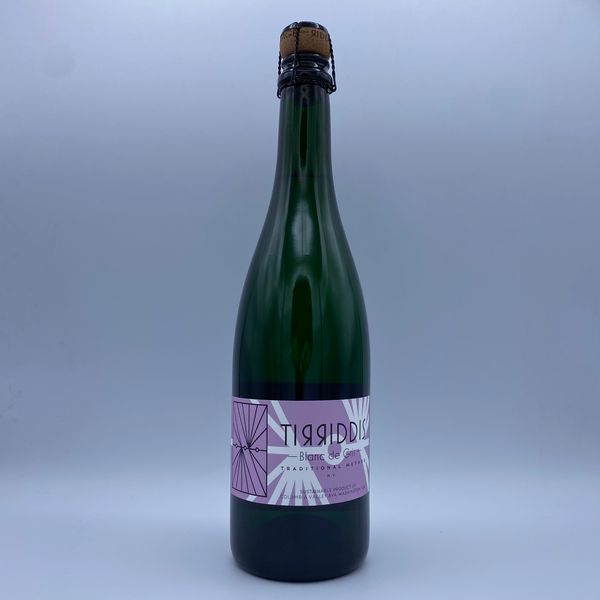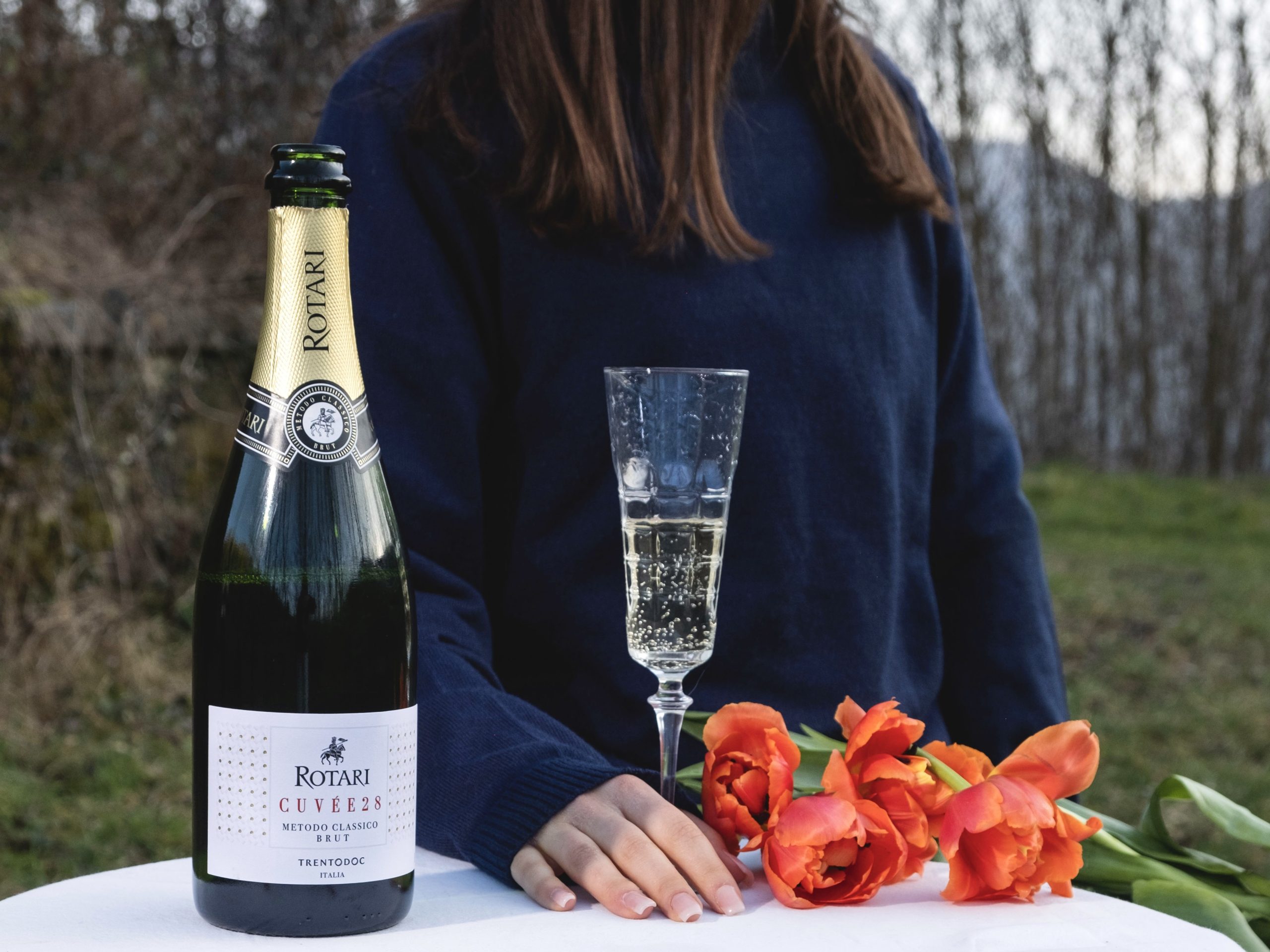Traditional method sparkling wine from untraditional regions: Washington State
According to a recent Wine Intelligence report, US sparkling wine consumption grew 30% between 2019 and 2022, and, as US demand for bubbles broadens, so does the desire for traditional method sparkling wines from untraditional areas. In part one of a series, we consider US domestic traditional method sparkling wine, starting with a close look at the fine fizz from Washington state.
Leading the Way

Most consumers consider Washington state a source of big, bold reds, but a few brave bubble makers statewide aim to change that perception.
“Ste. Michelle has obviously made a traditional method sparkler for years in the state,” says Christian Grieb, senior VP of Sales and winemaker at Treveri Cellars. “We were the first to really be a traditional method producer.”
Christian’s father, winemaker Juergen Grieb, immigrated from Germany to Washington state in 1982. Eventually, he founded sparkling-centric Treveri Cellars in 2010. Today, the winery produces approximately 40,000 cases annually. “We’re committed 100% fully in our hearts, our souls, and in practical methods to the traditional method of sparkling winemaking,” says Grieb.
Frizz fray

Since 2010, a handful of sparkling houses also joined the Washington frizz fray. These include Woodinville’s Elentone, and Prosser-based Tirriddis.
Elentone owner/winemaker Chris Sherry crafted bubbles at Harrow & Hope in England before moving stateside in 2016. (The name ‘Elentone’ nods to the ancient moniker for Sherry’s hometown of Maidenhead, listed in the Domesday Book.)
“I think you can make serious sparkling wines in Washington,” contends Sherry. The tall, taciturn Brit founded his 200-case sparkling house with wife Miggy in 2018.
More recently, Washington State University (WSU) Viticulture & Enology program graduates Andrew Gerow, Gabriel Crowell and Matthew Doutney established Tirriddis in 2021. (Its name riffs on sparkling wine processes tirage, riddling, and disgorgment.)
“The reality is that we have been drawn to its technicality,” says winemaker Gerow. “And the lack of definition of Washington sparkling wines – something we are excited to construct and define.”
Additionally, a few boutique wineries like Two Vintners in Woodinville, and Gros Grain in Walla Walla produce traditional method sparklers to enhance their portfolios.
“Everyone loves bubbles!” says Morgan Lee, co-owner/winemaker at Two Vintners. In 2020, Lee tapped long-time friend Christian Grieb to collaborate on a small-lot brut ‘pandemic project.’ Treveri provided the fruit, Lee chose the blends, and Treveri finished the wine, releasing it in late 2022. “I was very excited to be able to have a friend who would enter in this collaboration with me,” says Lee.
Lay of the land
At first glance, fashioning fizz in Washington’s Mediterranean and high desert wine growing regions canters counter-intuitive. Unless you know the lay of the land.
“We prefer cooler than warmer, so, obviously, I’m not sourcing from Red Mountains,” says Grieb, who farms about 100 acres organically in Naches Heights AVA. He also sources from other growers. “I’m trying to stick mostly in the Yakima Valley, and Naches Heights AVA. We’re looking for unique soil compositions – that’s why we’re looking for elevation, things that are above the Missoula floodplain, that tends to offer higher acid content.”
Partner Content
Understanding microclimates helps, too. “The climate is definitely different. We get great body to these sparkling wines, and I think that is because of the climate,” says Sherry, who sources his Pinot Noir, Chardonnay, Pinot Blanc and Pinot Meunier from cool-climate Lake Chelan and Columbia Gorge AVA’s. “Everything’s very interesting geologically, like the Missoula floods and volcanic ash.”
Conversely Tirriddis opts for Rattle Snake Hills and Horse Heaven Hills. “Base wines from our riper site in the Horse Heaven Hills AVA provides our sparkling program with great strength, body, and opulence,” says Gerow. “Whereas bases from our cooler, Rattlesnake Hills AVA site seeks to fortify the acidic structure, uncover fruit, and propels the aromatic nuances.”
Blank canvas

Ironically, Washington’s emerging sparkling wine status provides a blank canvas for creativity.
“Since it has yet to be defined, we are utilizing “non-traditional” varietals that grow great in our area, such as Cabernet Sauvignon, Pinot Gris, Chardonnay, and Syrah,” says Gerow. “Our house style is very focused, clean, and bright – emphasizing fruit character with a complex use of vintage wines.”
Others, like Walla Walla winemaker Matt Austin launched Gros Grain in 2018 with Lemberger Pét Nat. Subsequently, Austin tilted towards traditional method sparkling wine with Chardonnay and Pinot Noir.
Interestingly, climate change now forces Austin to shift away from champagne-style, towards cava-style wines. “Many people don’t realize how warm the growing season is in Walla Walla,” says Austin.” It’s quite Mediterranean, and much warmer than Champagne – really, much more comparable to Penedès in Spain, which is why I believe that Xarel-lo and Macabeo should find a much more natural balance in our environment.”
Dosage tweaks, too. “We’re not making champagne, we’re making Washington sparkling wine,” says Sherry. “It’s still got great minerality, but we definitely get rounder wines. Our acidity is never going to be Champagne or England; it drops off a lot quicker here. But then it also mean we can add less dosage.”
Vine-to-bottle

Surprisingly, Washington sparking winemakers tend processes in-house. This tack underscores the region’s dedication to time, craft, and cost-intensive traditional methods.
“We try to do everything from vine-to-bottle,” says Grieb. “So all the bottling, en tirage, riddling, disgorging is happening right here on site at the property, even all the way to some of the vines.”
“The growing-to-bottling, and the ultimate disgorging/dose process – everything is done in-house,” adds Gerow. Sherry produces his wine at colleague Pomum Cellars, but invested in bottling and disgorging equipment. He also riddles and disgorges by hand.
Moreover, most winemakers age wines between two years to seven years in bottle. “My goal for the traditional method wines is to create a canvas for lees aging (typically three to four years at this point) which still reflects the unique character of the site,” says Austin.
Ultimately, consumers value the quality, diversity, and authenticity of Washington state traditional method sparkling wines. “There’s not a million of them out there – domestic producers that are family-owned, producing the best terroir-driven wines they can from their American viticultural areas,” concludes Grieb. “That’s always been our goal – to make something beautiful, and distinct, that represents Washington State, and do it in a very special way.”
Related news
Non-vintage is ‘putting together a puzzle’ says Champagne Lallier




